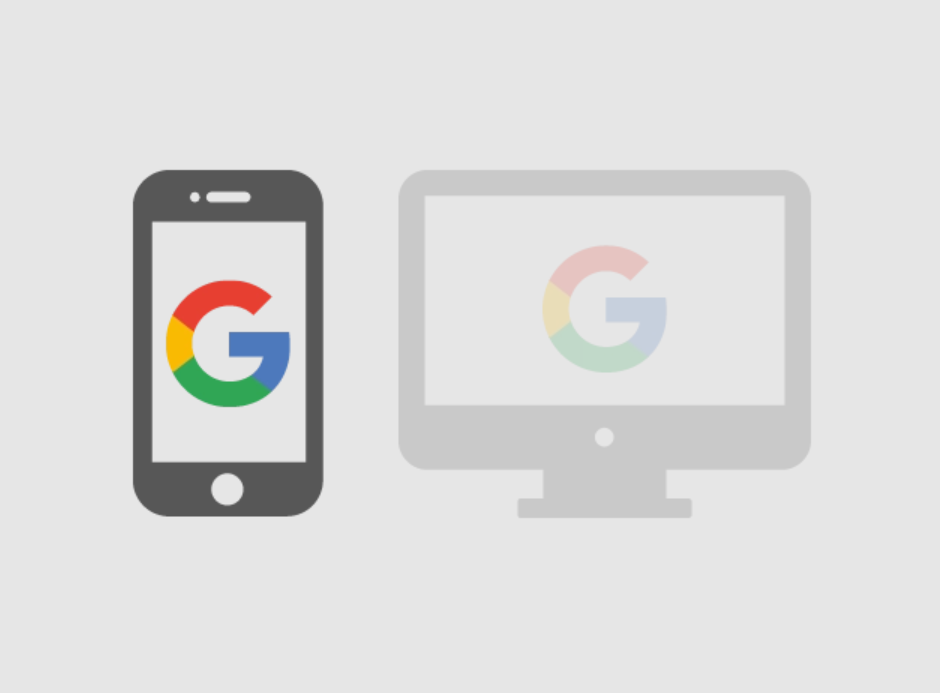Google has been diligently working on mobile-first indexing for some time now, and this monumental shift in their approach is in direct response to the way people search and browse the web. With the ubiquitous adoption of mobile devices in virtually every aspect of our lives, Google’s decision to prioritise mobile indexing was inevitable.
As of March 2021, Google completed the transition, switching all websites from desktop-first to mobile-first indexing. The transition process involved moving websites over as soon as their systems recognised they were ready for the shift. If your website was launched after July 2019, it automatically entered the realm of mobile-first indexing.
Let’s delve into the details of what this change means for your website and how you can optimise for it effectively.
What is Mobile-First Indexing?
Mobile-First Indexing represents a fundamental transformation in the way Google approaches the indexing and ranking of websites, marking a pivotal shift in the digital landscape. Historically, Google’s indexing process heavily relied on the desktop version of a website as the primary reference point for determining search engine rankings. However, as the digital landscape evolved, particularly with the exponential rise in mobile device usage, it became increasingly apparent that this approach needed a significant overhaul.
With smartphones and tablets becoming ubiquitous tools for online exploration, it was imperative for Google to adapt its indexing methodology accordingly. This shift towards prioritising the mobile version of a website in the indexing and ranking process underscores the search engine giant’s commitment to adapting to changing user behaviors and preferences.

Mobile-First Indexing recognises the reality that a substantial portion of users now access the web primarily through their mobile devices. Therefore, the move towards mobile-first reflects Google’s dedication to ensuring that users on these platforms have the best possible experience when searching for information online. This includes ensuring that websites are mobile-responsive, load quickly, and provide a seamless browsing experience for mobile users.
In practical terms, this means that Google’s web crawlers predominantly analyse a website’s mobile version to determine its relevance and ranking in search results.
Why is Mobile Optimisation Important?
Mobile optimisation is essential for several reasons:
- User Experience: Users expect fast-loading, responsive, and easy-to-navigate websites on their mobile devices. If your website isn’t optimised, you risk losing visitors frustrated by a poor experience.
- SEO Rankings: Google’s algorithms prioritise mobile-friendly websites. If your site isn’t optimised, it may rank lower in search results, reducing organic traffic.
- Mobile Traffic: As mobile usage continues to rise, optimising for mobile ensures that you tap into a vast and growing audience.
- Competitive Advantage: Mobile optimisation can give you an edge over competitors who haven’t embraced this shift.
How to Optimise Your Website for Mobile-First Indexing?
Now that we understand the importance of mobile optimisation, let’s dive into the steps to ensure your website is ready for Mobile-First Indexing.
1. Responsive Design
The primary goal of responsive design is to eliminate the frustration users feel when a website is difficult to navigate on a smaller screen or loads slowly on a mobile device. When you invest in responsive design, you’re investing in the satisfaction of your visitors. Here are some key aspects to consider:
- Screen Size and Device Compatibility: Responsive design takes into account the wide spectrum of screen sizes and devices that people use to access the internet. It ensures that your website looks and functions optimally regardless of whether it’s viewed on a small smartphone screen, a mid-sized tablet, or a large desktop monitor. This adaptability extends to various operating systems and web browsers as well.
- Improved SEO Performance: Search engines like Google prioritise websites with responsive designs because they provide a better user experience. Google’s algorithms favor mobile-friendly websites, which can result in higher search engine rankings. Thus, responsive design isn’t just about user experience; it can also positively impact your website’s visibility and reach.
- Consistency Across Platforms: One of the most significant advantages of responsive design is that it ensures a consistent user experience across all platforms. Your website’s content, layout, and functionality remain uniform, regardless of the device your visitors are using. This uniformity helps reinforce your brand identity and ensures that your audience receives a coherent message.

2. Mobile-Friendly Content
Optimise your content for mobile devices by using shorter paragraphs, concise sentences, and bulleted lists.
Break up lengthy text into easily digestible chunks. When readers encounter large blocks of text on their mobile screens, it can be overwhelming and discouraging. Short paragraphs and concise sentences make your content more reader-friendly, allowing users to quickly grasp the key points.
Ensure that fonts are easily readable, and images and videos are appropriately sized for mobile screens.
3. Page Speed
Mobile users are accustomed to quick access to the content they desire. Slow-loading websites can be frustrating and may result in high bounce rates, where visitors quickly leave your site. To keep users engaged and satisfied, it’s imperative to prioritise page speed optimiation.
One of the most valuable tools at your disposal for assessing and improving your website’s page speed is Google’s PageSpeed Insights. This tool not only evaluates your site’s speed performance but also offers suggestions and recommendations to enhance it. By heeding its insights, you can take specific actions to address any speed-related issues.

4. Mobile-Friendly Navigation
Mobile users, in particular, require a navigation system that is intuitive, unobtrusive, and accommodating of touchscreen interactions. Here are some strategies to ensure your site’s navigation is optimised for mobile devices:
- Streamlined Menu Design: To simplify your site’s navigation for mobile users, begin by streamlining your menu design. Instead of complex, multi-tiered menus that can be challenging to navigate on smaller screens, opt for a clean, straightforward menu that provides easy access to key sections of your website. A minimalist menu design helps users find what they’re looking for quickly and efficiently.
- Clear and Accessible Menu Placement: The placement of your menu is also crucial. Ensure it’s easy to locate, typically as a responsive, easily accessible icon. Users should be able to find and interact with the menu effortlessly, without having to hunt for it.
- Touch-Friendly Button and Link Design: Mobile navigation should prioritise touch-friendly design elements. Buttons and links need to be large enough for users to tap accurately without unintentionally clicking adjacent items.
5. Test on Multiple Devices
Regularly test your website on various mobile devices to ensure it looks and functions correctly. Consider using mobile testing tools like BrowserStack or responsive design testing tools in popular web browsers.
7. Mobile-First Indexing in Google Search Console
If your website is not yet set up for Mobile-First Indexing, you can use Google Search Console to check its status. Google will provide notifications when your site is moved to Mobile-First Indexing.
8. Monitor Your Analytics
Keep a close eye on your website’s analytics, paying special attention to mobile traffic and user behavior. This data will help you identify areas that may need improvement.

Optimising your website for Mobile-First Indexing is no longer an option; it’s a necessity in today’s digital landscape. By focusing on responsive design, mobile-friendly content, page speed, navigation, mobile SEO, and regular testing, you’ll ensure that your website not only ranks well on search engines but also provides an exceptional user experience for your mobile audience. Stay updated with the latest mobile trends and technologies to maintain your competitive edge and continue to grow your online presence in the mobile era.


